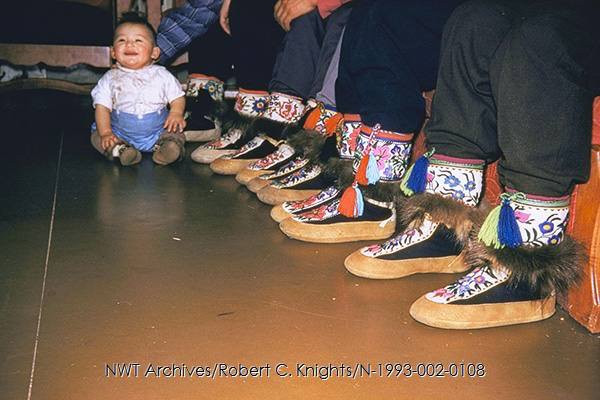This article originally appeared on VICE US
In 2005, a small group of students from the Geographic Photography College in Tel Aviv began traveling to the Palestinian village of Bil’in in the West Bank. The students, three of them from Israel and one from Argentina, were photographing weekly protests against the construction of the Separation Wall—a barrier built by Israel ostensibly for security reasons—that cut off villagers’ access to most of their farmland.
Videos by VICE
The students were looking to use their images of the protests in Bil’in to show the conflict from the Palestinian’s perspective and bring more awareness of the occupation into the minds of Israelis. By the end of the school year, they had formed into a photo-collective called Activestills. The collective was made up of freelance photographers who were united in their politics against the occupation and who agreed to share the credit and copyright to all their photos. They also shared a belief, expressed in the collective’s mission statement, that they could change Israeli public support for the occupation—which was heavily influenced by the mainstream Israel media—through the publication of their photos.
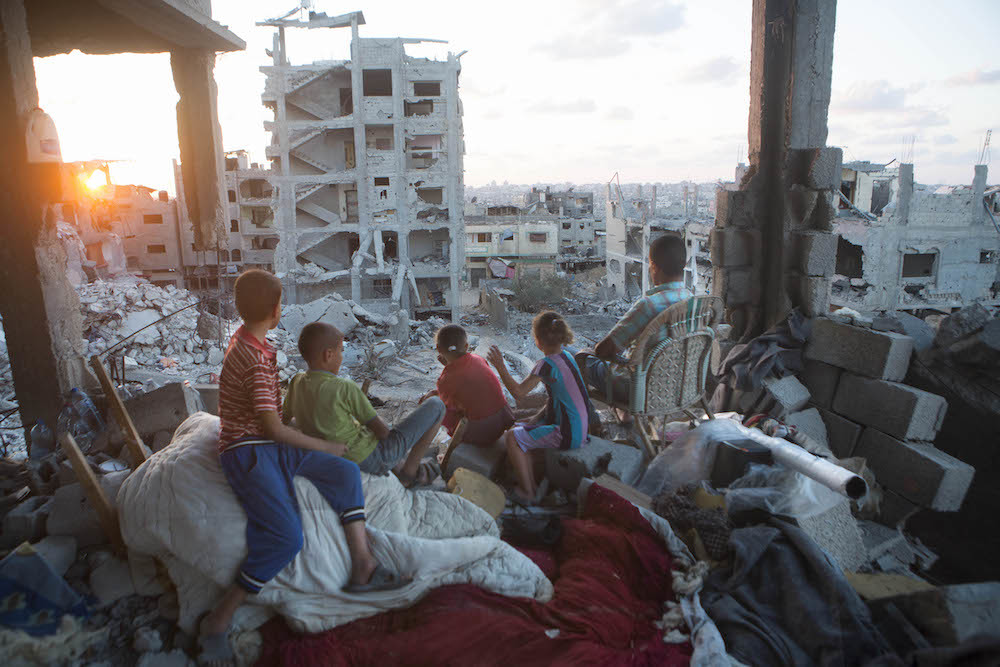
A Palestinian family in the ruins of their home in the Al-Tufah district of Gaza City, which was heavily bombed during the Israeli military offensive, Gaza Strip (2014). © Activestills
The collective realized they needed to create an alternative platform to publish their work, and subsequently started an online archive the was continuously updated with photographs from the demonstrations they participated in throughout the West Bank. The Activestills photographers had a clear agenda: to identify themselves as visual activists by rejecting the very notion of objectivity, and actively participate in protests alongside the Palestinian subjects they photographed. Because of this, the photographers were (and continue to be) subject to similar violence faced by the Palestinian activists they’ve spent over a decade documenting.
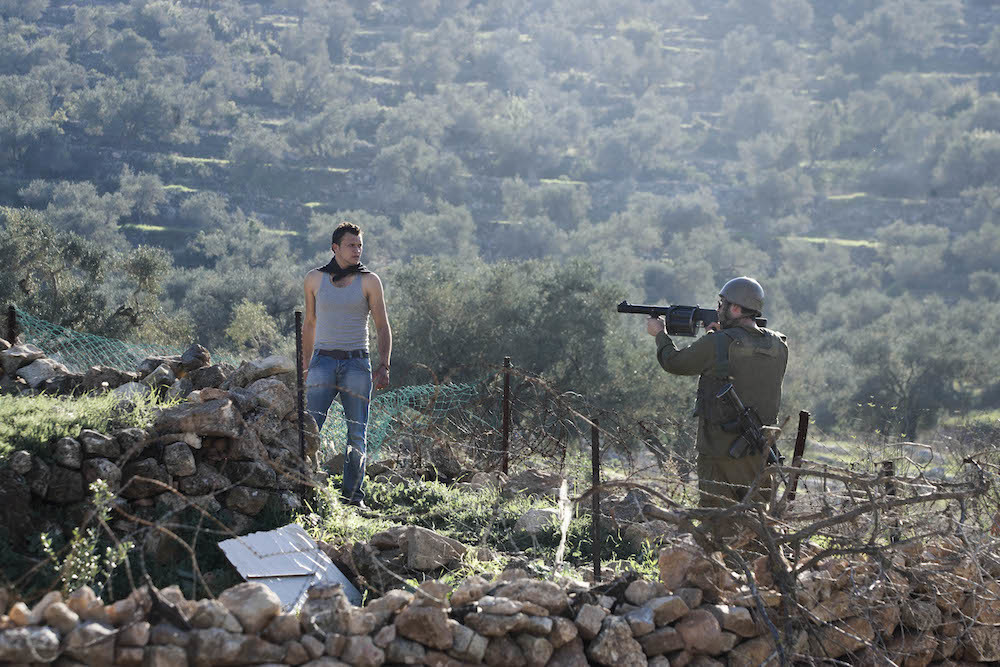
Palestinian protester opposite an Israeli soldier during the weekly demonstration against the occupation. Nabi Saleh, West Bank (2010). © Activestills
The collective is currently organizing exhibitions in London and New York City for 2017 to mark the the release of a new book that chronicles the collective’s activities over the last decade. Activestills: Photography as Protest in Palestine/Israel, out now through Pluto Press, is an exhaustive text that combines hundreds of photographs with over 30 essays, interviews, and testimonials from activists, academics, and both the photographers and photographic subjects themselves.
To learn more about the book and how it was created, VICE interviewed the publication’s editors—Vered Maimon, the director of the photography studies program and senior lecturer at Tel Aviv University, and Shiraz Grinbaum, a photographer who joined Activestills after it was founded and also works as the collective’s curator, archivist, and photo editor.
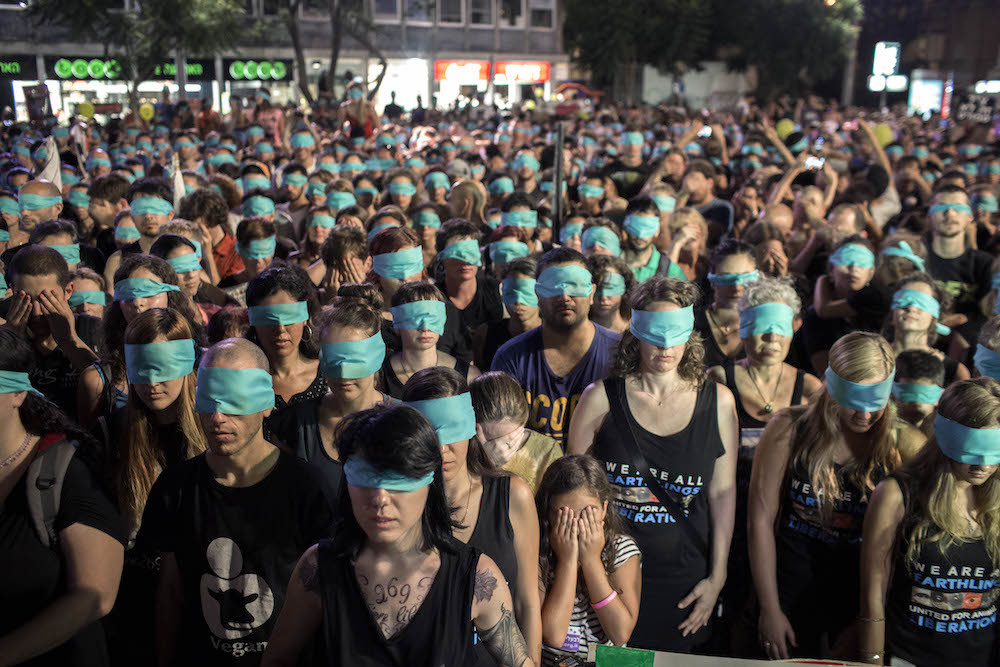
Protesters take part in a demonstration calling for animal liberation. Tel Aviv, Israel (2013). © Activestills
Why did you decide to include so much text instead of just putting together a conventional photo book?
Shiraz Grinbaum: When I met Activestills, five years ago, I immediately wanted the whole world to know about the group. I was always very struck by the way they work and their motivations and their [political] agenda. So I actually started thinking about the book then and was discussing it with Oren [Ziv, a founding member of Activestills] right from the beginning.
Vered Maimon: I’m an academic who writes about photography and researches photography. From the moment Shiraz asked me to be part of this project [it] became not just about displaying photographs, but theorizing and historicizing their importance.
One of the things that makes Activestills really unique is the way they are collaborating with specific communities and have been following their struggles for ten years. So how do you bring this sense of temporality and familiarity into the book? We asked for texts by [Palestinian and Israeli locals] and activists; we asked them to respond to the photographs [they physically appeared in], and to talk about what photography meant to their struggles. Then of course that brought the issue of the photographers, why shouldn’t the photographers themselves talk about their work? So that brought about the all the text by Activestills members included in the book.
We realized this cannot be just a book of photographs; it has to contextualize those photographs and to explain and reflect their unique status and through that the unique work of Activestills.
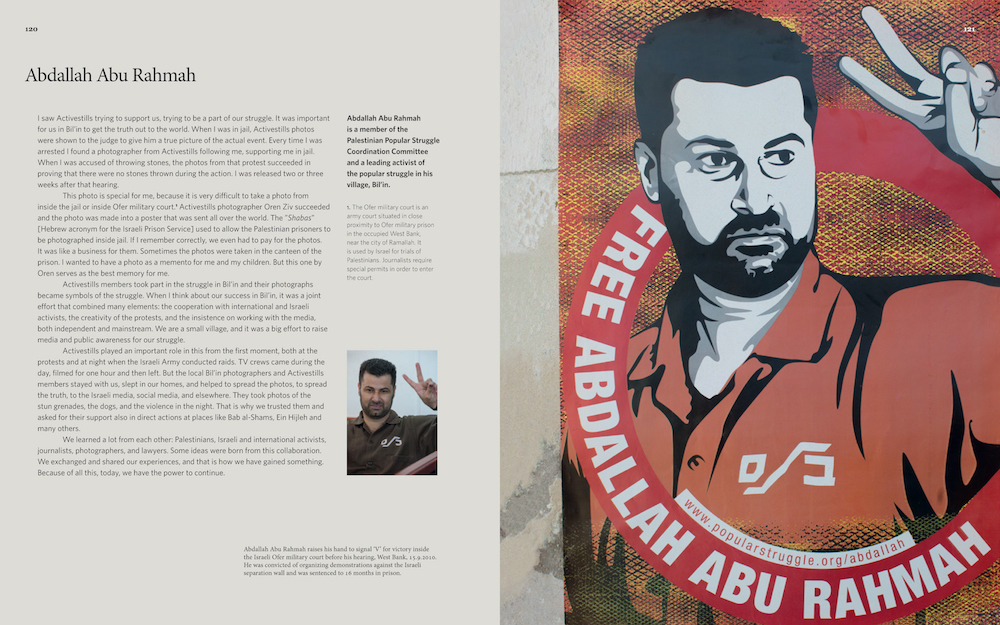
A spread from the new Activestills book, ‘Activestills: Photography as Protest in Palestine/Israel,’ showing an essay by the Palestinian activist Abdallah Abu Rahmah. © Activestills
And did you successfully established this context in the book?
Vered: We’re very happy with the result. The idea was also to break this kind of generic status of books. You have catalogues, anthologies, textbooks, but we wanted to do something that is really about creating this special book that can be a textbook, a catalogue that shows the richness of Activestills’ work, and a collection of essays on the work.
Shiraz: It’s very important for me to include the voices of the activists themselves and the people who were photographed for years. There are some people featured in the book who we have photos of from 2005 until today. I think it’s a very unique thing in the world of photography that photojournalists or activists can go to the same place after ten years and maintain the connection with the community.
What was the process of creating the book like?
Shiraz: At the beginning, we wanted to do a book only about the Palestinian struggle against the Separation Wall, and then we realized we also wanted to give the sense of what’s going on inside [Israel], not only in the West Bank. A lot of our work was also about the African asylum seekers and the displacement of Bedouin communities, and we wanted to give a sense of the whole region.
We started collecting the texts and then came the very hard part of how to select 500 images from 40,000 that are on the website. There are so many, but we narrowed it down to the main topics that are featured in the book—such as the 2014 war in Gaza, killings of Palestinian activists in the West Bank, the plight of African asylum seekers, the destruction of Bedouin Villages in the Negev, and Jewish working class communities in Tel Aviv, to name a few.
Vered: It was a very long process. It took two years, one year was conceptualizing what the book would be, and one year of intense production—designing, editing the text and editing the images.
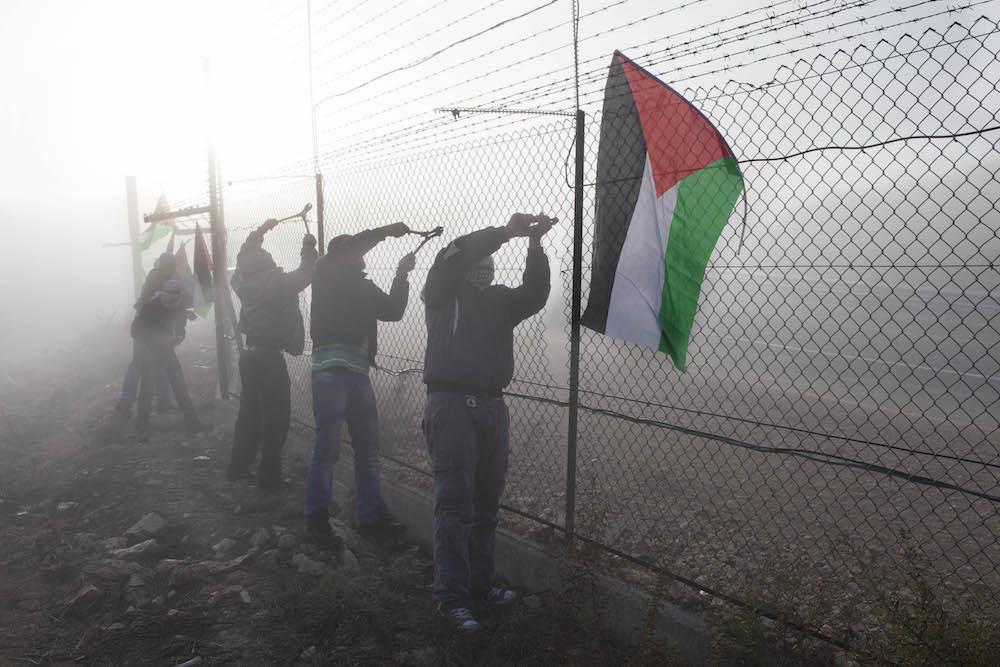
Palestinian protesters cut a section of Israeli separation wall during a direct action. Rafat, West Bank (2013). © Activestills
Do the Activestills photographers consider their work a form of protest?
Shiraz: What was striking for me was how they saw the photography as an inherent part of the protest. There are people who are medics, there are people who are carrying signs and shouting the slogans, and there are people who are taking the photos. It’s this idea of photography being part of [the protest]. Also, there’s this very intimate sense you see in the photos. Even though the events are very public and violent, there’s also a compassionate sense of their gaze; they’re very connected to the struggle.
Vered: What Activestills produces is struggle photography. First of all, it’s not photography of victims; it’s photography of struggling subjects who are fighting for their rights. It’s also photography that is meant to create change, not in terms of representation necessarily, but in terms of how the photographs come about and what happens to them after they are taken, what uses are made of them.
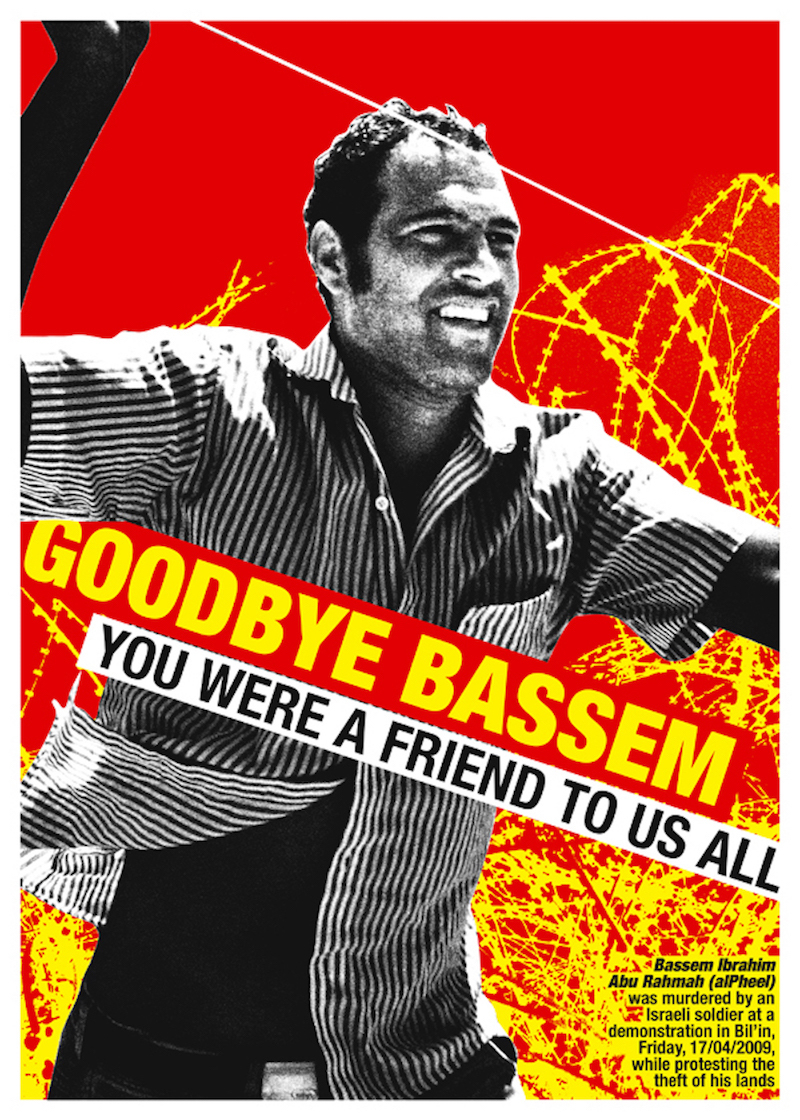
A memorial poster of Bassem Abu Rahmah, a Palestinian activist from Bil’in killed during the village’s weekly protest in 2011. The photo was originally taken by Activestills photographer Oren Ziv. © Activestills
In the book, there is a photograph of Bassem Abu Rahmah, a Palestinian activist from Bil’in who was later killed during a protest, flying a kite in front of the Separation Wall. Can you talk about that transformation that occurred with this image?
Vered: What fascinated me when I spoke to Oren about it is how he could show me what happened to the image of Bassem Abu Rahmah. The image became a poster commemorating his death, then the poster was used by protesters during demonstrations, and was used as a shield to protect them from teargas. The photo was used on the memorial site where he died and it was hung in his village. So there was this whole circulation of the original image, which was very interesting because it didn’t just commemorate his unfortunate death but it also became a tool to propagate the struggle [against the Israeli occupation].
What links the Activestills photographers together and what holds the collective together?
Vered: It’s their commitment, not their style or personality. The way they [hold] social and political justice and equality over any other value such as popularity, economic success, or career. They’re activists and they have the same political agendas, not just [relating] to the Israeli occupation, but to other social issues that are evoked in the books—women rights, social housing, a lot of other struggles.
The fact that everybody puts their photograph in a collective archive, that everybody shares copyrights, that they decide together about their mode of operation and each photographer can choose their own assignment—this is what makes them a collective.
See more photos from ‘Activestills: Photography as Protest in Palestine/Israel’ below. The book is available to order here.
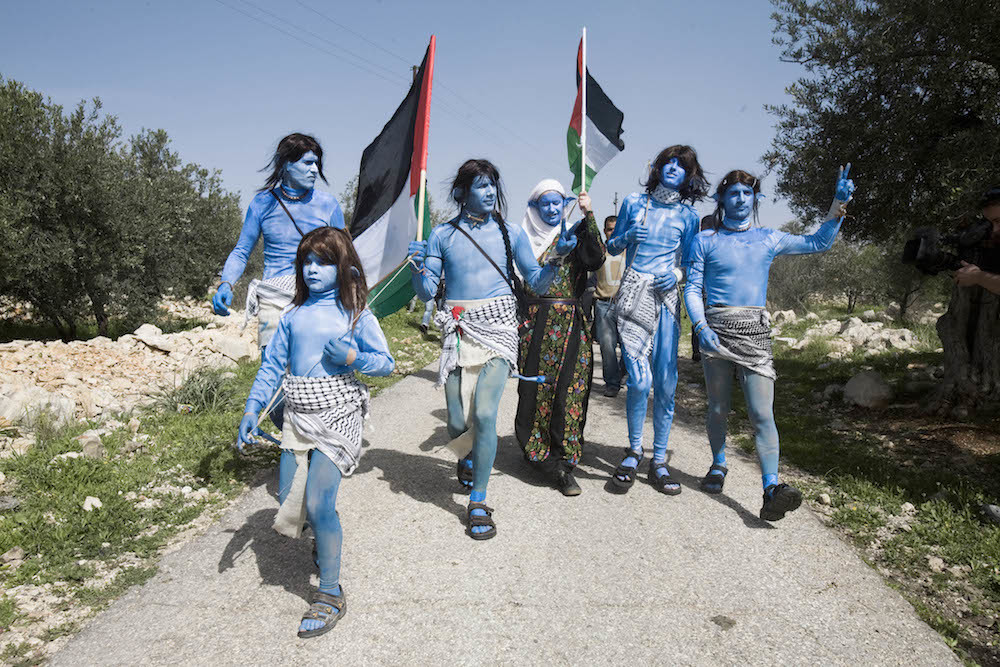
Palestinian activists dressed up as fantastical creatures from the James Cameron film ‘Avatar’ protest against the Israeli separation wall and occupation. West Bank (2010). © Activestills
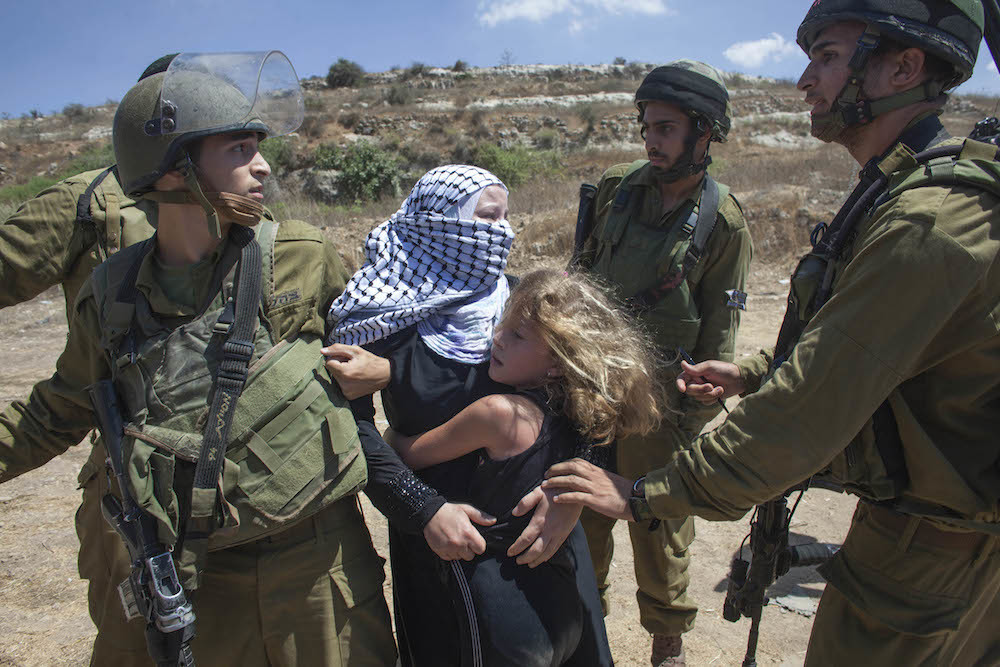
Israeli soldiers arrest Nariman Tamimi as her 8-year-old daughter, Ahed, tries to free her during a protest against the occupation. Nabi Saleh, West Bank (2012). © Activestills
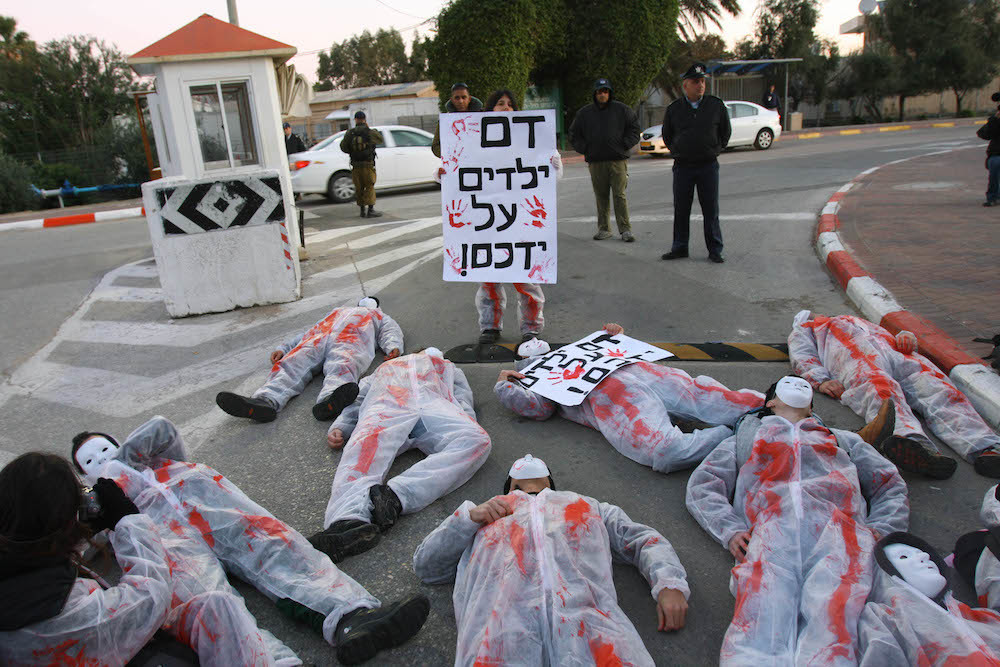
Israeli activists block the entrance to Sde Dov army base during an action against the Israeli attacks on the Gaza Strip. The sign says: “Children’s blood is on your hands.” (2009) © Activestills
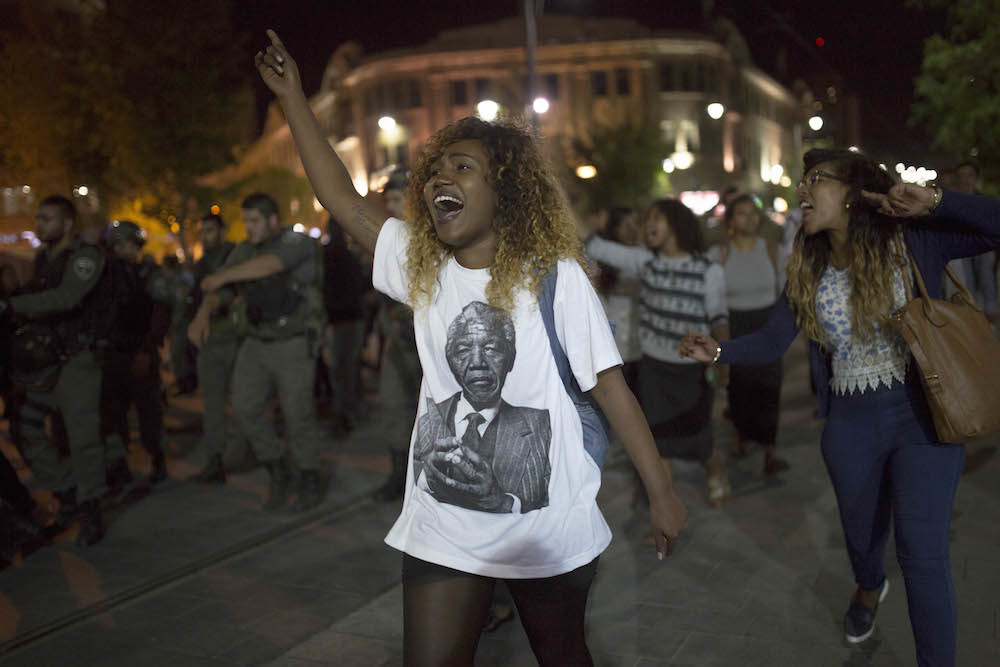
Israel’s Ethiopian community demonstrates against police brutality and racism, following a series of incidents involving police violence directed at Ethiopian youth. West Jerusalem (2015) © Activestills
Daniel Tepper is a photographer and journalist. You can follow him on Instagram and Twitter.

